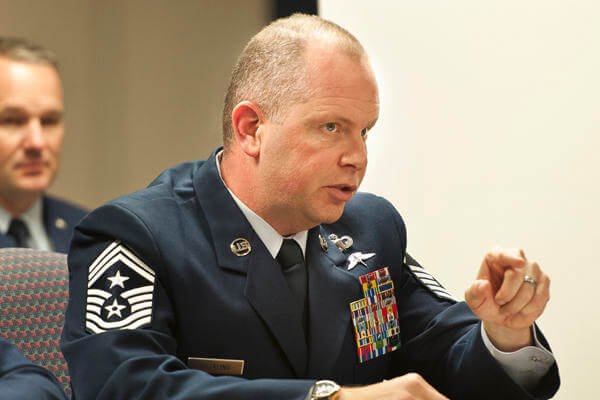WASHINGTON – Air Force Reserve leaders testified to the National Commission on the Structure of the Air Force that merging the Air Force Reserve with the Air National Guard would create little value and numerous adverse impacts - detracting from the broader goal of improving the Air Force structure.
Appointed by the FY13 National Defense Authorization Act, the commission, who heard testimony on Oct. 24-25, is reviewing the Air Force's structure to determine if and how it should be changed to meet future missions and funding challenges. The commission's report and recommendations are due to the president by Feb. 1, 2014.
"I believe the nation benefits from the synergistic value of a three-component Air Force consisting of Active Duty, Air Force Reserve and Air National Guard," said Lt. Gen. James F. Jackson, chief of Air Force Reserve and commander of Air Force Reserve Command during his testimony on Oct. 24.
The National Commission on the Structure of the Air Force interviewed senior leaders - from past and present, active duty, guard and reserve - to review proposals to integrate the Air Force Reserve and the Air National Guard into one reserve component.
"I do not believe combining the AFR and ANG is beneficial or value-added to our nation," Jackson told the commission. "A merger of the AFR and ANG has been discussed many times during the 65 years of our history, yet has never materialized."
Also, the commission met with the top enlisted leaders of each of the three components and asked about strengths, capabilities, improvements, shortfalls, resiliency, participation, recruiting, retention and morale.
"We have met our recruiting goal for the 13th consecutive year," said Chief Master Sgt. of Air Force Reserve Command Cameron B. Kirksey during his testimony to the commission on Oct. 25. "Our retention rate averages 88 percent for the past seven years. Morale continues to be high and our Airmen want to serve more than ever."
"We are concerned with the current budget environment and the effects of sequestration," said Kirksey. "From furloughs and paycheck losses, to the stress caused by financial uncertainty, the resiliency of the force is being tested, with the long-term impacts yet to be fully understood."
Regular Air Force, Air National Guard and Air Force Reserve Airmen work together around the world as a team in air, space and cyberspace. Today's "Total Force" consists of about 327,600 Regular Air Force Airmen, 105,400 Air National Guardsmen, and 70,880 Air Force Reserve Airmen actively serving in the Selected Reserve as designated by the FY13 National Defense Authorization Act. The Air Force Reserve also maintains a strategic depth of more than 790,000 stand-by or non-participating reservists and retirees that can be called up for national emergencies.
"We deliver our diverse portfolio of capability through air, space and cyberspace as a federal reserve, always in Title 10 status, whether at home or abroad," said Kirksey.
"The Air Force Reserve always serves in Title 10 status as the federal member of the Air Reserve Component," said Jackson.
This is the third time Jackson has addressed the commission. In previous testimony, the general told the commission about an analytical simulation tool called the "Individual Cost Assessment Model" which can determine an Airman's overall life-cycle cost, in all three components.
Leveraging the cost-effectiveness, capability and capacity of the reserve and guard during this time of fiscal austerity is of keen interest to the commission. Led by the Honorable Dennis M. McCarthy, a retired Marine Corps lieutenant general and the previous assistant secretary of Defense for Reserve Affairs at the Pentagon, the commission has visited and interviewed Airmen across the country. The vice chair is the Honorable Erin Conaton, a former under secretary of Defense for Personnel and Readiness and previous under secretary of the Air Force.
"Whether reserve, guard or active duty, when making proposed changes, we must be aware of the impact to our Airmen's lives and their families," said Kirksey. "They are our most important resource."




